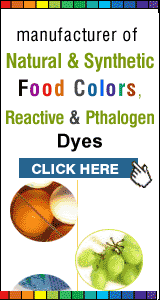| Color |
Red, Purple and Blue |
| Source |
Red Cabbage, Strawberries, Grape
Skin, Blueberries, Raspberries |
| Color Pigments |
Cyanidin, Delphinidin, Malvidin,
Peonidin, Petunidin, Pelargonidin |
| Solubility |
Soluble in aqueous solutions |
| Stability |
Each pigment has different stability
Brighter in lower pH range
Becomes blue at higher pH |
| Other Properties |
Antimicrobial Properties
Antioxidant properties
Anti-cancer properties |
International Coding
| Cyanidin |
CAS# 528-58-5 |
| Delphinidin |
CAS# 528-53-0 |
| Malvidin |
CAS# 643-84-5 |
| Peonidin |
CAS# 134-01-0 |
| Petunidin |
CAS# 1429-30-7 |
| Pelargonidin |
CAS# 134-04-3 E163 |
The word "anthocyanin" is derived from two Greek words, anthos
(flower) and kyanos (blue) there are six types of anthocyanins all
exhibiting different stability profile based on their structure, supporting
compounds, process and chemicals used for extraction and food processing.
Anthocyanin pigments are responsible for the red, purple, and blue colors
of many fruits, vegetables, cereal grains, and flowers. These pigments
undergo reversible structural transformations with a change in pH manifested
by strikingly different absorbance spectra. Anthocyanins being natural
colorant appear in the exempt from certification in the FDA list but permits
restricted use. They are not used in drugs and cosmetics. They are used in
beverages, fruit fillings, snacks, dairy products and confectionery.




